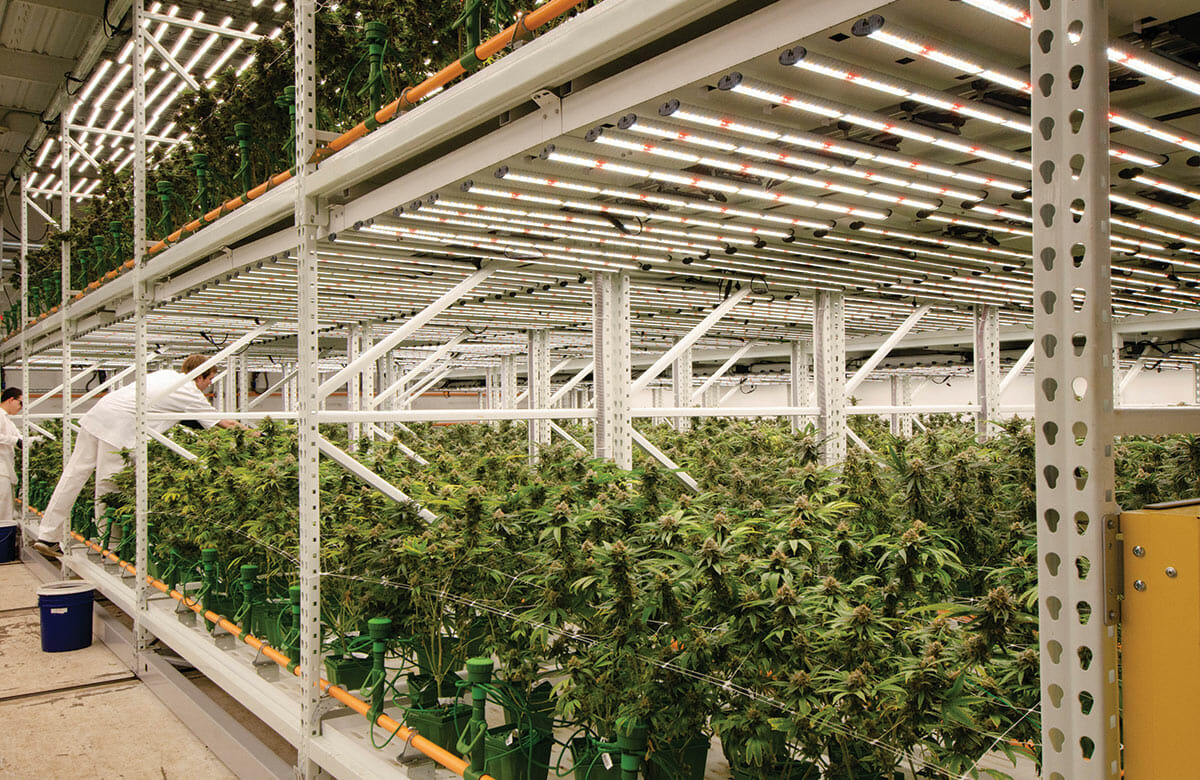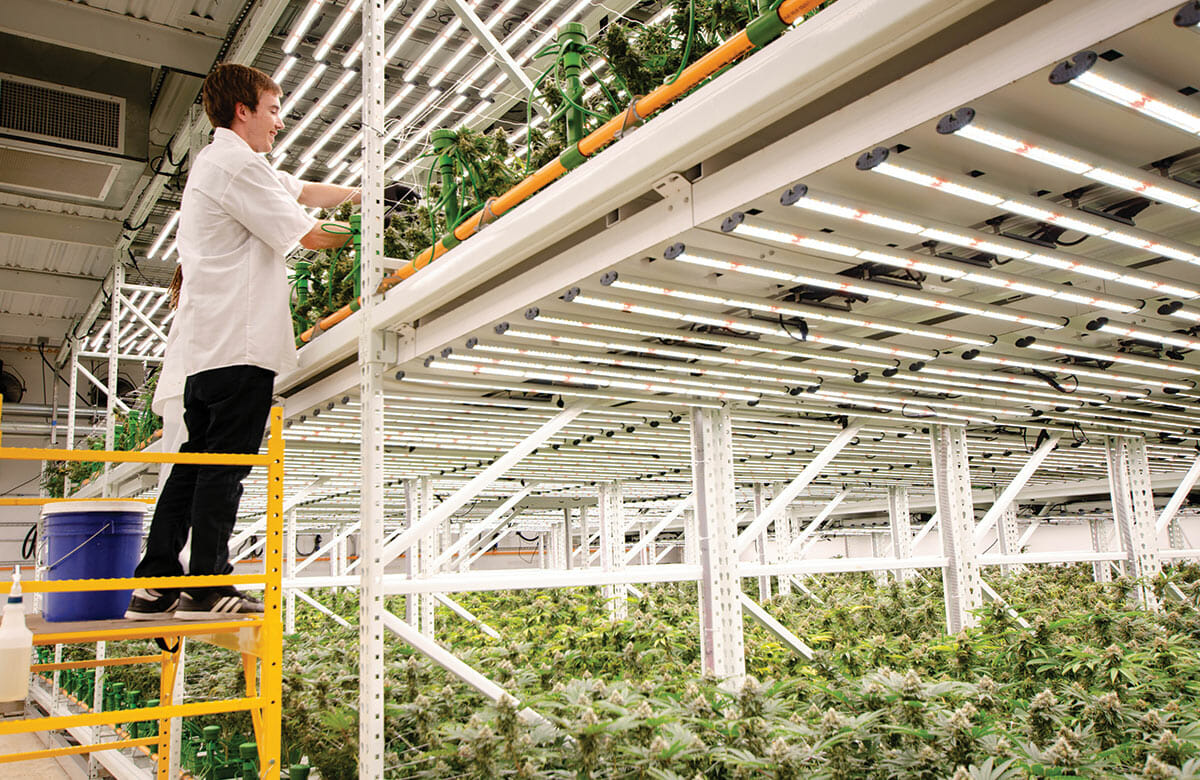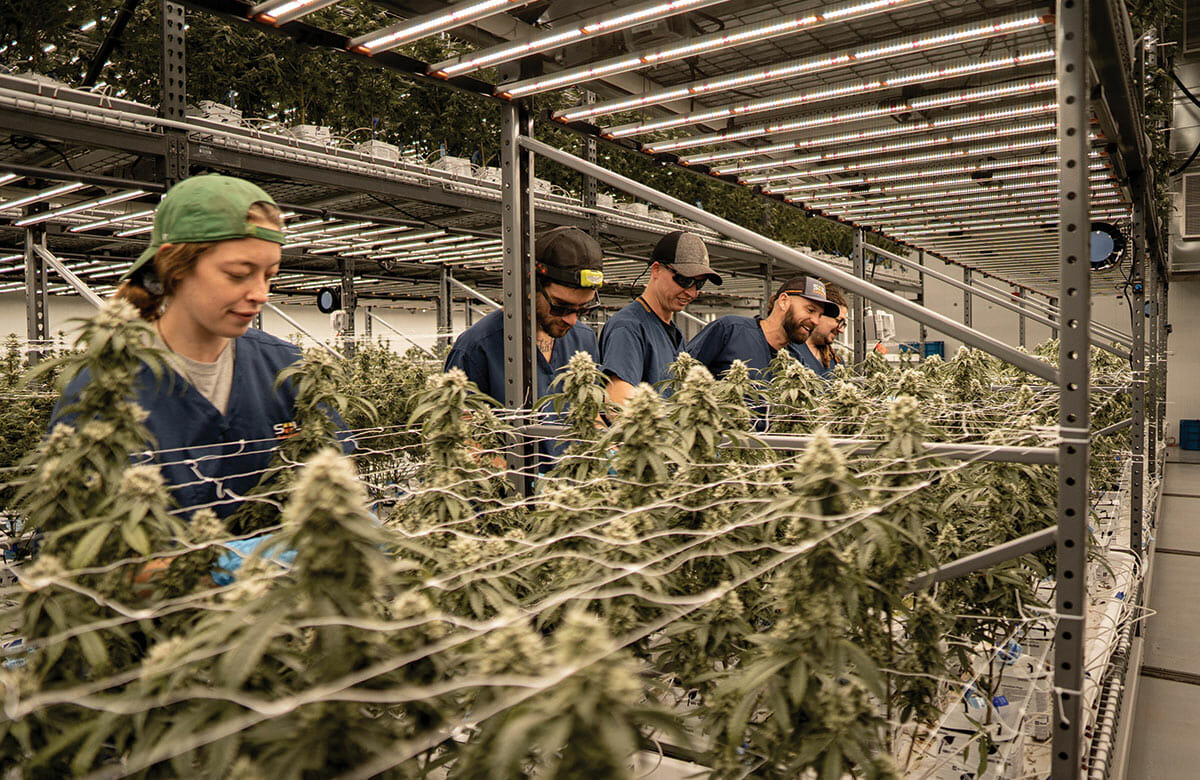
19 Mar Terms to know when adjusting your environment in cannabis production
Cannabis cultivation requires precise and diligent management of all aspects of the controlled growing environment. Of the different environmental factors which influence the production of cannabis, lighting is by far one of the most important to adjust and control as it impacts other parameters. Fluence’s horticulture service expert in cannabis cultivation, Sean Sangster, created the Adjusting Your Environment webinar to help growers understand the importance of lighting and the various key factors which will help them maintain and adjust their lighting to achieve the best possible plant yields and crop quality.
Key Environmental Factors for Growing Cannabis
The webinar discusses when considering a light source for the cultivation of cannabis, how the quantity, quality and duration of the light are all key factors that influence a cannabis plants’ growth and development (see Figure 1).
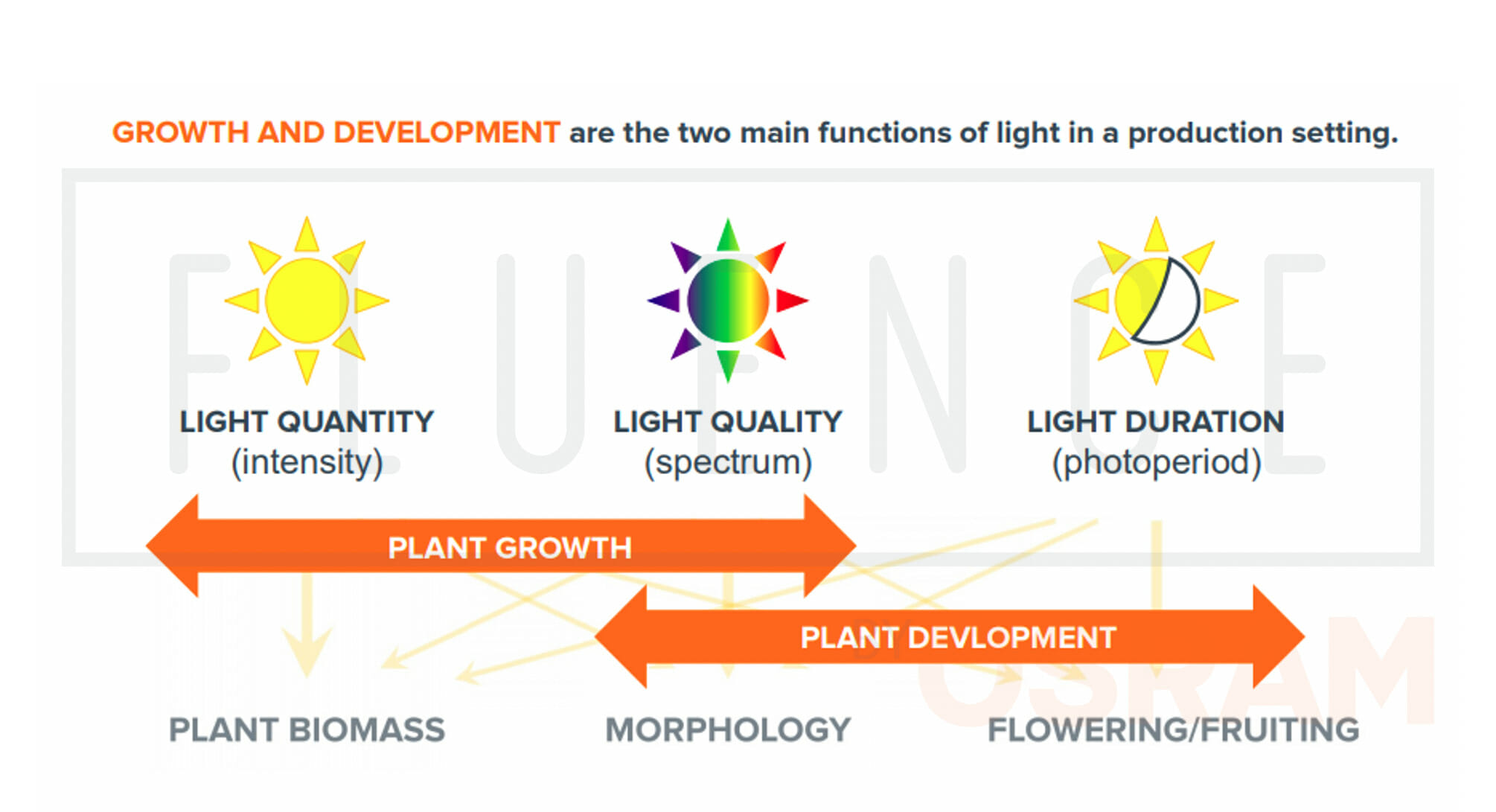
PPFD and DLI are two of the first key concepts which are integrally important to understanding how to best adjust your environment. Sangster illustrates the difference between PPFD and DLI in a simple graphic, see Figure 2. As depicted the in graphic, PPFD, or photosynthetic photon flux density, measures the number of photons from a light source at a given time. DLI, or daily light integral, measures the amount of light over a period of time. It is important for cultivators to be measuring both PPFD and DLI as the fluctuations in light have a direct impact on your environmental parameters.
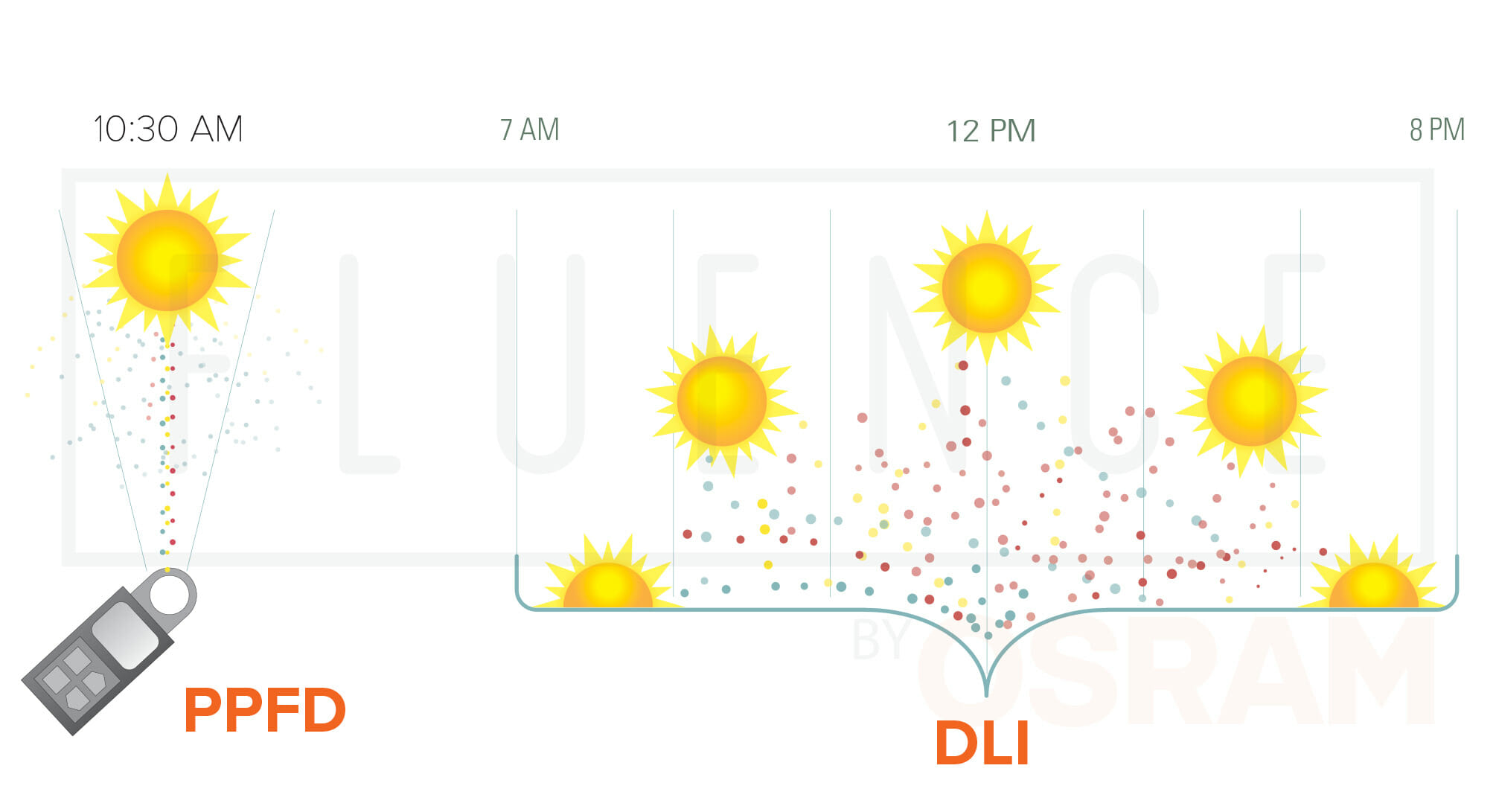
Two of these environmental parameters include temperature and CO2 which can be limiting to plant production if not managed properly. With Fluence LED solutions, the higher light intensity can cause an increase in CO2 consumption. Because of this, be sure to manage and monitor your supplementation of CO2 appropriately. Fluence LED lights do not produce a significant amount of heat, be sure to adjust your HVAC units to maintain proper temperatures in your growing facility.
Under high PPFD, transpiration is another vital factor to watch for. To ensure plants can flourish, Fluence recommends carefully monitoring leachate EC nutrient solutions, and carefully strategize water irrigation events to avoid yield reductions.
Finally, VPD (Vapor Pressure Deficit) is a convenient and important metric to monitor in an environment, which Fluence discusses in-depth, in the webinar.
Growing for Success
By adjusting your environment to eliminate limiting factors under high PPFD, growers can greatly increase yields of their cannabis crops. The Adjusting Your Environment webinar can teach you how to do this, as well as address key questions you may have, such as:
Q: How much PPFD would you recommend for flowering in cannabis?
Typically, Fluence has seen growers push as much as 1,500 PPFD for cannabis. We have worked with commercial partners and universities that have had success growing cannabis plants with as much as 1,800 PPFD. It is important to consider the diminishing returns that occur at the highest PPFD levels. While cannabis plants can thrive under these high PPFDs, yield increases begin to taper off after 1,500-1,600 PPFD, so generally, most cultivars do not require more light than that.
Q: How frequently should I water under high PPFD?
This is highly dependent on the grow media and the pot size, but we typically see cultivators watering with about 1-2 liters, per plant, per day. Under high PPFD lighting, this water should be distributed consistently throughout the day. While it is ideal to work with a qualified irrigation technician to establish the right saturation point for your media, a good rule of thumb is to distribute the water in small increments of 75-100 mL of water across 9 watering events, starting 1 hour after the lights turn on and ending 2-3 hours before the lights are off. This will allow your cannabis plants to absorb what is put in, ensuring each watering event is efficient.
Q: Doesn’t VPD vary from plant to plant and leaf to leaf? How can I find the right VPD level for my entire crop?
A: VPD is a guideline to manage the temperature range and relative humidity across your entire facility. Don’t think of VPD as a direct measurement of transpiration of the plant, think of it as an indicator for areas in your facility. Direct adjustments to VPD will need to be made to eliminate microclimates in your facility, so use VPD to measure small areas across your facility, to better understand how set points vary because of lack of ventilation, inconsistencies in airflow and other obstructions that will impede creation a homogenous cultivation environment.
To learn other highly relevant research insights and best practices that will help you increase your crop yields, tune in to the Adjusting Your Environment webinar now.





